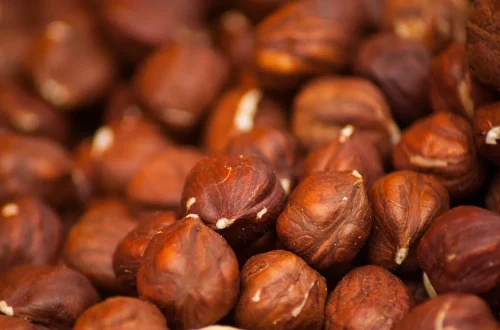
How Often to Feed Your Leopard Gecko for Optimal Health
Feeding a leopard gecko can be a fascinating experience for pet owners. These unique reptiles are popular in the world of exotic pets due to their manageable size, vibrant colors, and relatively easy care requirements. However, understanding the nutritional needs and feeding frequency for leopard geckos is crucial for their overall health and well-being. Unlike more traditional pets, reptiles like leopard geckos have specific dietary needs that can vary based on their age, size, and activity levels.
As with any pet, the right feeding routine can significantly affect your leopard gecko’s growth, energy levels, and longevity. It is essential to recognize that these creatures are insectivores, which means their diet primarily consists of live insects. The variety and frequency of these feedings can play a pivotal role in ensuring that they receive all the necessary nutrients.
In this article, we will delve into the specifics of how often to feed your leopard gecko while considering different factors that influence their dietary needs. By understanding these elements, you can create a feeding schedule that promotes optimal health for your scaly friend.
Understanding the Nutritional Needs of Leopard Geckos
Leopard geckos have specific nutritional requirements that must be met to ensure their health and vitality. In the wild, these reptiles primarily consume a variety of insects, including crickets, mealworms, and roaches. Each of these food sources provides essential nutrients that support their growth, metabolism, and overall well-being.
A balanced diet for a leopard gecko should consist of protein, fat, vitamins, and minerals. Protein is crucial for growth and muscle development, while fats provide energy. Vitamins and minerals, such as calcium and vitamin D3, are vital for bone health and metabolic function. In captivity, it’s imperative to replicate this natural diet as closely as possible to prevent nutritional deficiencies.
One common practice among leopard gecko owners is to provide a variety of prey items. This not only keeps the gecko interested in food but also ensures that it receives a broader range of nutrients. For instance, crickets are high in protein but low in fat, whereas mealworms are higher in fat but lower in protein. Offering a mix can help maintain a balanced diet.
Additionally, gut-loading the insects before feeding is an effective strategy. This involves feeding the insects nutritious foods, such as fruits and vegetables, before offering them to your gecko. This way, your leopard gecko benefits from the nutrients that the insects have consumed.
Understanding these nutritional needs is the first step in establishing a proper feeding routine for your leopard gecko. By ensuring a diverse and well-balanced diet, you set the foundation for a healthy and thriving pet.
Feeding Frequency for Young vs. Adult Leopard Geckos
The feeding frequency for leopard geckos varies significantly depending on their age and size. Young leopard geckos, particularly those under six months old, are in a crucial growth phase and require more frequent feedings. Generally, it is recommended to feed them daily, providing them with a variety of insects to support their rapid growth and energy needs.
As they grow and transition into adulthood, the feeding frequency can change. Adult leopard geckos, typically over six months old, can be fed every other day or even every three days. This shift is primarily due to their slowed growth rate and decreased metabolic demands. However, it is essential to monitor their body condition and adjust the feeding schedule accordingly. Some adults may require more frequent feedings, especially if they are more active or if they are breeding.
In addition to age and size, individual differences can also play a role in feeding frequency. Some leopard geckos may have a higher appetite than others, and factors like temperature, humidity, and stress can influence their feeding behavior. Keeping a close eye on your gecko’s eating habits will help determine if adjustments are needed.
Another factor to consider is the size of the insects being offered. Younger geckos should be fed smaller insects, typically about the size of their head, while adults can handle larger prey. Ensuring the right size of food not only encourages healthy eating habits but also prevents choking or digestive issues.
In conclusion, understanding the feeding frequency for young and adult leopard geckos is integral to their health. By tailoring the feeding schedule to their developmental stage and individual needs, you can ensure that your pet receives the proper nutrients at the right time.
Best Practices for Feeding Your Leopard Gecko
Feeding your leopard gecko may seem straightforward, but there are best practices that can enhance their feeding experience and overall health. One of the most effective strategies is to establish a consistent feeding routine. Reptiles thrive on routine, and knowing when to expect food can reduce stress and encourage healthy eating behaviors.
When offering food, it’s essential to provide a variety of insects. While crickets and mealworms are popular choices, consider incorporating other insects like roaches, waxworms, or superworms into their diet. This variety not only provides a broader spectrum of nutrients but also keeps mealtime interesting for your gecko.
Another important aspect of feeding is ensuring the insects are appropriately sized and gut-loaded. As mentioned earlier, gut-loading involves feeding the insects nutritious foods prior to offering them to your leopard gecko. This practice maximizes the nutritional value of the prey and supports your gecko’s health.
Additionally, consider dusting the insects with a calcium supplement before feeding. Calcium is crucial for bone health, and many leopard geckos can develop metabolic bone disease if they do not receive enough of this vital nutrient. Dusting the insects with a calcium powder that contains vitamin D3 can further enhance absorption and benefit your pet.
Finally, it’s important to observe your leopard gecko during feeding times. Monitoring their appetite and eating habits can provide insights into their health. If you notice any changes, such as a lack of interest in food or weight loss, it may indicate a health issue that requires attention.
By following these best practices, you can create a positive feeding experience for your leopard gecko, promoting optimal health and longevity.
Signs of Overfeeding or Underfeeding
Monitoring your leopard gecko’s body condition is a critical aspect of their care, as both overfeeding and underfeeding can lead to health issues. Understanding the signs of each can help you adjust their feeding routine accordingly.
Overfeeding is often characterized by excessive weight gain and obesity. An overweight leopard gecko may have a rounded body shape and difficulty moving. In some cases, the tail may also appear disproportionately large. Over time, obesity can lead to serious health problems, including fatty liver disease and other metabolic disorders. If you suspect your gecko is overweight, consider reducing the frequency of feedings or the portion sizes of the insects offered.
On the other hand, underfeeding can lead to weight loss and malnutrition. A gecko that is not eating enough may appear lethargic, have a sunken appearance in the sides, or show signs of weakness. Their tail, which is a fat reserve, may also become thin or shriveled. If you notice these signs, it’s essential to evaluate your feeding routine. Factors such as stress, environmental conditions, or health issues may contribute to a loss of appetite.
Another indicator of proper feeding is the gecko’s behavior. A healthy leopard gecko should be alert, active, and inquisitive. If your gecko exhibits signs of lethargy or unresponsiveness, it may be an indication of dietary issues or underlying health problems.
In conclusion, being vigilant about your leopard gecko’s body condition and behavior can help you identify signs of overfeeding or underfeeding. By adjusting their diet as needed, you can ensure that your pet remains healthy and thrives.
**Disclaimer:** This article is for informational purposes only and does not constitute medical advice. For any health concerns regarding your leopard gecko, please consult a veterinarian with experience in reptile care.




